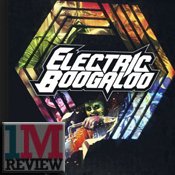“Bombs, boobs, blood and breakdancing were all on the menu, even if much of it held no nutritional value whatsoever.”
by Rob Rector
I’m not sure the fact that so many of the films featured in Electric Boogaloo: The Wild, Untold Story of Cannon FIlms elicited so many youthful movie memories says more about the studio or about me.
Cannon, the infamous studio that, in its heyday, was cranking out films at a breakneck pace (1986 saw 43 films released under its logo alone), was rarely associated with quality, but it was a sweet spot for this young boy growing up through the 80s. Bombs, boobs, blood and breakdancing were all on the menu, even if much of it held no nutritional value whatsoever.
- Electric Boogaloo: The Wild, Untold Story of Cannon Films
- Written & Directed by
Mark Hartley - Cast
Molly Ringwald, Dolph Lundgren, Franco Nero - Release Date
December 2014 - Rob’s Score: 8/10
When the animated Cannon Group logo clanked together in the opening credits of a film, you knew you were in for an exploitation extravaganza: martial-arts mayhem (Ninja III: The Domination, 1984, American Ninja 1985), sword-and-sorcery silliness (Hercules, 1983, The Barbarians, 1987), flag-waving jingoism (The Missing in Action trilogy, 1984-88), and dime-store knock-offs of more popular films (Raiders of the Lost Ark clones like Treasure of the Four Crowns, 1983, and King Solomon’s Mines, 1985; cut-rate Terminator copy Cyborg, 1989).
All of these titles (and many others that never even saw the light of a movie-house projector) are reminisced over by the cast and crews in this behind-the-scene documentary, which is making its way on Video on Demand this month. And while the films may provide a visual chuckle or two, the film’s true virtue is in its recollections of the studio’s larger-than-life owners, Menahem Golan and Yoram Globas.
*****
The two Israeli-born cousins took over the struggling studio in 1979, and essentially went on a script shopping spree, purchasing abandoned material at bargain rates, rushing them into production, only to quickly move onto the next. There’s no deep digging into the their lives in Electric Boogaloo, so don’t press “play” expecting a hard-hitting expose on the financial mishandling of Cannon’s patriarchs. But if you like fly-on-the-wall war stories of misguided productions, talentless chutzpah, and shameless self-promotion.
Director Mark Hartley took the same approach with Not Quite Hollywood: The Wild, Untold Story of Ozploitation, a look into the lesser-known Australian cinematic exports, and here he spends a brief backstory about the two prodigious producers before amassing a large roster of actors, directors, editors, and just about anyone else who was running around the studio for any length of time (with many of them giving their own heavily accented imitation of Golan and/or Globus).
Occasionally, the film delves into juicy tangents (Sylvia Kristel’s drug use, a universal on-set disdain for Sharon Stone, the theft of Bo Derek’s personal photos from the duo), but never dwells long enough to keep us from yet another walk down the dirt roads of movie memories.
The films in Cannon’s canon are now appreciated primarily for nostalgia’s sake alone, but the occasional flower poked through the manure it manufactured: Runaway Train, Barfly, Street Smart are a few that managed to garner acclaim from critics and awards-givers.
The film concludes with the eventual breakup of the two moguls and their attempts to outdo one another with — rather fittingly — competing Lambada films that both tanked at the box office. But for its runtime, it’s a jaunty jog through a studio and its heads that had aspirations that far exceeded their talents and some damn fun stories in how they dealt with that chasm.






